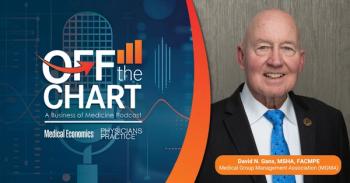
Six Tips for a Smart Employee Cell Phone Policy
A smartphone can be a distraction to staff members and also a potential HIPAA violation waiting to happen. Here are tips to avoid that at your practice.
Do you tend to keep your cell phone in your pocket (when it’s not in your hand) throughout the workday? Do your employees do the same? And how often do you see them texting or tapping away when they’re supposed to be working?
We’re all addicted to our shiny smartphones , whether it’s a matter of staying connected, staying informed, or keeping ourselves entertained. However, as a physician or practice administrator, this can translate into big problems! Employee productivity issues are just the beginning. You’ve also got patient care standards to uphold and a host of HIPAA-related privacy and security concerns - and it’s your responsibility to anticipate threats and mitigate possible negative outcomes.
The upshot, of course, is that a robust and legally compliant employee cell phone policy is a necessity in every healthcare practice. After all, most smartphones incorporate not just phone and email capabilities, but a camera, audio and video recording tools, internet browsers, data storage and transfer features, and more. It’s up to you to draw a line in the sand - or on your shiny tile floor -as to what kind of employee cell phone usage is and isn’t acceptable at your business.
Here are some points to consider when rethinking your employee cell phone policy:
• What fits your practice? Maybe you’re trying to solve a current employee issue, or maybe your team is already pretty responsible. Perhaps you want phones kept off employees’ persons except during breaks - or perhaps you’re aware that parents on your staff need their phones nearby to stay in contact with kids home alone. Some small practices have no break room for cell phone usage. Others always have one clinical room open. While each office is different, popular provisions include the following:
-Cell phone use in front of patients, at the front desk, or in patient areas is not acceptable.
-Cell phones may only be used in the break room / outside the practice / in a designated area.
-Cell phones may not be used on the clock, except during designated breaks.
-Other points your policy will need to include: What about photos or recordings, whether of patients, employees, or records/working areas? You will likely need a separate policy covering these topics.
• What laws apply? Federal, state and local laws are updated frequently, and they’re nearly impossible to keep up with on your own. To ensure you’re in line with all laws and best practices that apply to you, have an employment law or human resources expert create and periodically review your policies. DON’T borrow a policy from a friend’s practice or download one online. It will likely have legal pitfalls you’re not aware of.
• Don’t overregulate cell phone usage on breaks. You may attract unwanted attention from the National Labor Relations Board (NLRB) if your policies impede employees’ protected rights to organize or better their working conditions through their own or the company’s communication resources. Some states also limit what you can require of (or forbid) your employees during breaks.
• Know your HIPAA responsibilities. Is every employee’s HIPAA training up to date, so that they fully understand their responsibility NOT to share patient information or photos (even cute or funny ones!) via cell phones, on social media, and/or online? All employees should be re-trained yearly!
• What related technology or device-related policies will you need? Camera usage and social media are obvious ones. Also, consider whether Protected Health Information is ever accessed in any way on a mobile device, via email, browser, or software portal? What about tablets and laptops? Are any employees using company-provided phones or devices? If you answered yes to any of those questions, then you need additional policies, which must be professionally written and HIPAA-compliant.
• How will you enforce your policy? Not all violations are created equal: An unauthorized patient photo is not in the same league with a quick text to check on mom’s surgery. Allow yourself the firmness to terminate immediately when needed, but the flexibility to coach when warranted. Some situations may generate additional questions or responsibilities. What if an OSHA violation is photographed, even if cameras usage isn’t allowed in clinical areas? In this type of grey area, balance your desire to protect your practice's reputation (say, by deleting the photo) with a very careful understanding of the employee's rights and your obligations to correct the problem. Consult an expert whenever things get tricky.
Regardless of whether our cell phones are recognizable in another 10 or 15 years (imagine the iPhone 25!), personal technology is here to stay, and so is employers’ ever-increasing burden for proactive compliance with employment laws and safety/security regulations. Keeping our employee policies up to date is a necessity, not an option - especially in healthcare.
Paul Edwards is the CEO of CEDR HR Solutions, the nation’s leading provider of customized medical employee handbooks and expert HR support for medical practices of all sizes and specialties. He can be reached at 866-414-6056 or pauledwards@cedrsolutions.com.
Newsletter
Optimize your practice with the Physicians Practice newsletter, offering management pearls, leadership tips, and business strategies tailored for practice administrators and physicians of any specialty.











